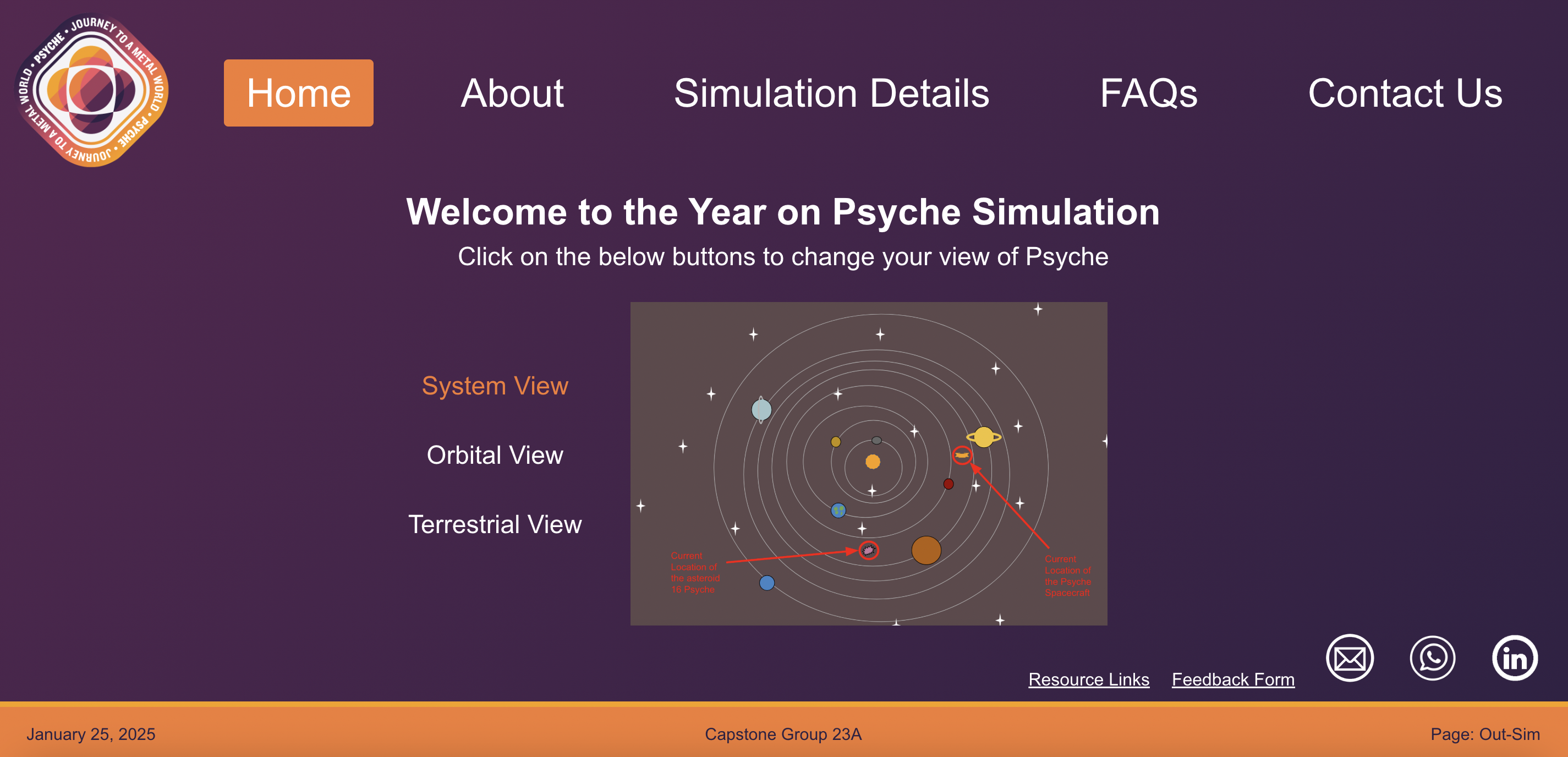Year on Psyche Simulation (Work in Progress)
Demo#

Overview#
The Year on Psyche Simulation project is an ambitious initiative to create a cutting-edge, interactive visualization of the Psyche asteroid, one of the most scientifically intriguing celestial bodies in the solar system. Psyche’s unique features, such as its metallic composition, rapid rotation, and extended orbit around the sun, distinguish it from other asteroids.
This project involves developing an educational tool that bridges complex scientific data with accessible and engaging visuals. By allowing users to explore Psyche’s surface, understand its orbital mechanics, and interact with its dynamic environment, the simulation aims to inspire interest in NASA’s Psyche Mission and the broader field of space exploration.
The project is a collaboration between Arizona State University (ASU) and NASA, leveraging state-of-the-art technologies like 3D modeling, physics simulations, and web-based interactivity to deliver a high-quality user experience. The final product will cater to students, educators, space enthusiasts, and professionals, providing an engaging and immersive way to learn about planetary science and asteroids like Psyche.
Why#
The motivation for this project stems from a desire to make space exploration accessible and engaging for diverse audiences. Psyche, a unique metallic asteroid, offers invaluable insights into planetary formation and the early solar system, but raw scientific data can be difficult for the general public to interpret.
This project simplifies complex scientific concepts through digestible visuals and interactive elements, promoting STEM education by inspiring students to explore careers in science, technology, engineering, and mathematics. It supports NASA’s outreach goals by generating excitement and public interest in the Psyche Mission, while also enhancing learning by providing educators with a reliable, user-friendly tool for teaching planetary science.
By fostering curiosity and engaging space enthusiasts with visually appealing, hands-on exploration, the project bridges the gap between scientific research and public understanding, encouraging greater appreciation for space exploration and its potential to shape humanity’s future.